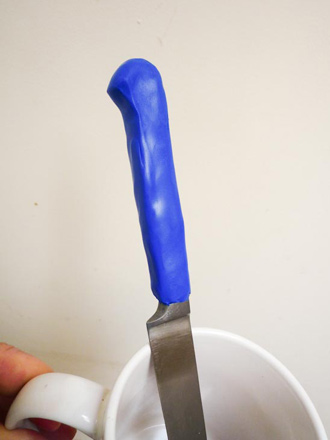Chapter 1: Doc and His Boys
1. The Members of the Gang
opening reads like a novel with a first person narrative as Whyte begins his description of the Nortons, a gang he is 'studying'.
My God this is Dickens! How Fagan got his mojo only in this case it is Doc. A remakrkable recording of conversation. How did he do this?
Whyte chronicles the rise of Doc as gang leader including an extended story about a running battle that for all of me sounds like violent capture the flag or red rover.
I love the accent and argot and the way Whyte captures the voice of his Doc. He describers the long term relationship betgween the gangs and the settlement house. Ten to twelve years for some! Where do we have this anymore outside of schools?
Whyte describes Danny, Doc's closest friend and how they connected up with Mike. Whyte is clear in this narrative about the connections btweeen and among the young men, a ntework map in words.
In his descriptions of Nutsy I see how closely Whyte knew these folks. I especially like how he describes how Carl and tommy "accepted" nutsy's leaership-very nuanced and empathic.
Whyte is alying out the various roles but not from some preconceived idea about role behavior but based upon facts at hand. I am truly struck by the artistic 'behaviors' of so many of the men-stained glass, classical violin. Whyte is not working from stereotypes.
In 1937 the Norton gang reformed with a much different lineup tied together by "mutual obligations". Perhaps we are beginning to see the analytic method pull together. The reference to strong group loyalties is very much kin to the idea in social capital studies about strong ties.
Page 12 "I" is expressed for the first time. Whyte influence map is a visualization of the group. This is triangulation of a sort where his narrative data is backed by a data visualiztion. Taken together they make a gestalt, taken apart not so much. Classic fusion of right and left hemispherics.

So Whyte has brought us up to speed on the politics and social structure of the gang of young men aged 20-29.
2. BOWLING AND SOCIAL RANKING
Whyte sets up the class struggle in the Italian Community Club as represented by the bowling match between the college boys and the Norton boys. The not so secrect agenda was to put the high-toned leaders in their place. You can see from the map above that Fred and Lou are once removed from Doc, but only once removed from the club leaders; hence, their 'betrayal'.
Bowling drew the gang togehter even mpore than usual. Whyte is especially concerned about not only describing the game but alson the mental landscape of the game for its participants especially in his discussion of confidence which I can only presume he got from his long nights of bowling with the boyis. Suffice to say: "there was a close connection between a man's bowling and position in the group." (18) Doc clearly wishes to win and regulurly brings in ringers from outside of the group to bowl in the five-man rotation.
Whyte takes up the interesting story of the meritorious, but choking Alex.
Doc creates an opportunity to decide on a merit pecking order by way of a culminating bowlokng matchbowl.

Doc and Long John acknowledge that the match was only intended as a way to reinforce the existing pecking order. Note how Whyte lets the words of the boys define the context. He does not impose a structure or meaning from the outside. It is interesting that Doc knew his gang well enough to know that there was little danger in having his apple cart turned over. Self-testing on his part? If so a powerful leadership tool.
Whyte defines the function of heckling and realizes that his position as a tolerated outsided did not entitle him to heckling. To the group, he donesn't really matter. Alecs response to his loss in the match is to challenge other one on one. Doc is the deciding factor by exhorting Long John to beat Alec.
This is the long way round the barn to saying that social position withing the gang matched bowling skill. Doc attempts to keep the status quo. In fact the bolwing league might be considered as a happy way to reinforce gang status, but Doc never wanted it as a way to challenge gang status. Or maybe he did?
THE NORTON'S AND THE APHRODITE CLUB
Whyte describes the social gap between the two clubs in the words of the boys--conceited. Doc tricked up a meet on their turf (the bowling alley) with the girls. The group drew together because of the bowling and Doc brought the Nporton's back to settlement house, the Aphrodite's turf. It didn't work because of the settlement house director. After tht the girls became a pawn in the power struggle between the norton's and the Commnunity Club. Alec and Joe have a falling out over this and that upsets the Norton's clearly as a challenge to the social order.

Whyte catches all of the nuance in this social dynamic because he is on tghe inside, not the outside doing sukrvey and making netwrok maps.
4. DOC'S POLITICAL CAMPAIGN
Change and dynamic affect the gang even though it appears stable. Doc struggles as a single unemployed male to expand his influence in politics. Doc's pretension to llarger spheres of leadership put the gang off kilter just as much as others had, perhaps even more so.
5. DISINTEGRATION
The gang fell off to six from the original thirteen. Doc was lspun out fromt gang becauseof his new job. And he is no longer the leader of the gang. Especially sad is the 'straddle' situation of Long John who is not part of Doc's or the gang's inner circle.
Interesting that Whyte intervenes in aid of Long John, a true participant/observer. But the most interesting story is the one where Doc by force of personality takes over the Drmatic Club from Angelo.
APPENDIX A: ON THE EVOLUTION OF STREET CORNER SOCIETY
The researcher, like his informants, is a social animal---that is the takeaway from this research. ONe must find a way into the community and a way to be a part of the community. And a description of this is a part of the research.
Whyte has a powerful description of the interaction between data and experience that I think reflects the focus of reason and the holism of experience. We abstract but only as ir arises from experience. It is as he says a unique phenomenology but one in which common elements may arise.
1. PERSONAL BACKGROUND
Upper middle class
Aspriation to write which you can see clearly in his opening.
Social reform urges
Came to understand people in a 'lilfe situation' as Myles Horton put it
Lincoln Steffens as a model for movement between classes
2. FINDING CORNERVILLE
"I was forced to do what I wanted to do..." this is an astonishing quote about doing reserach that is intrinsically interesting.
starts with a vague idea
Unscientific view of model slum--Dornerville
3. PLANNING THE STUDY
Used Lynds' Middletown as a model and began to think of his own role as sociologicla and athropological.
Preliminary plan
Spught advice
Advice was cold water on his big undertaking.
Abandoned grandious for the street corner
Originally thought to apply friendship patterns to Cornerville families,but in the end decided that he would just observe them in situ.
Had a research partner.
Finally realized that Cornerville was a rather large universe unto itself.
Took aa research methodology in its infancy out into the field for the first time. Get help.
4. FIRST EFFORTS
Make a false start.
Make another falst start.
Got another idea--ask for help.
Try on their wisdom and try it out.
Take a little risk.
Find out where your subjects are.
Find out where subject zero is.
Get lucky and seize the day.
Live where your people are.
5. BEGINNING WITH DOC
Don't take your hat off in the house--i.e. pay the hell attention!
Keep observing and stay ouit of trouble.
6. TRAINING IN PARTICIPAN OBSERVATION
Have a cover story that makes sense to those who are listening to it.
Line up supporters and allies.
Share with these allies
REalize that yoiu will have an evvect on the field of observation.
Seek out the leaders wherever you are.
Be open and odon't argue.
Don't ask open ended questions so much as watch what happens.
Know your place and keep to it.
Don't seek to overtly influence, but be helpful in ways that reflect local custom.
Your note organization will grow from your research but start with some plan.
7. VENTURE INTO POLITICS
The study will find you if you ante up.
Posted using BlogPress from my iPad
Location:Sociology 510












